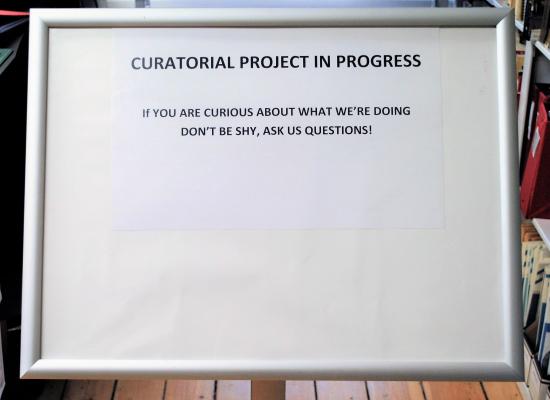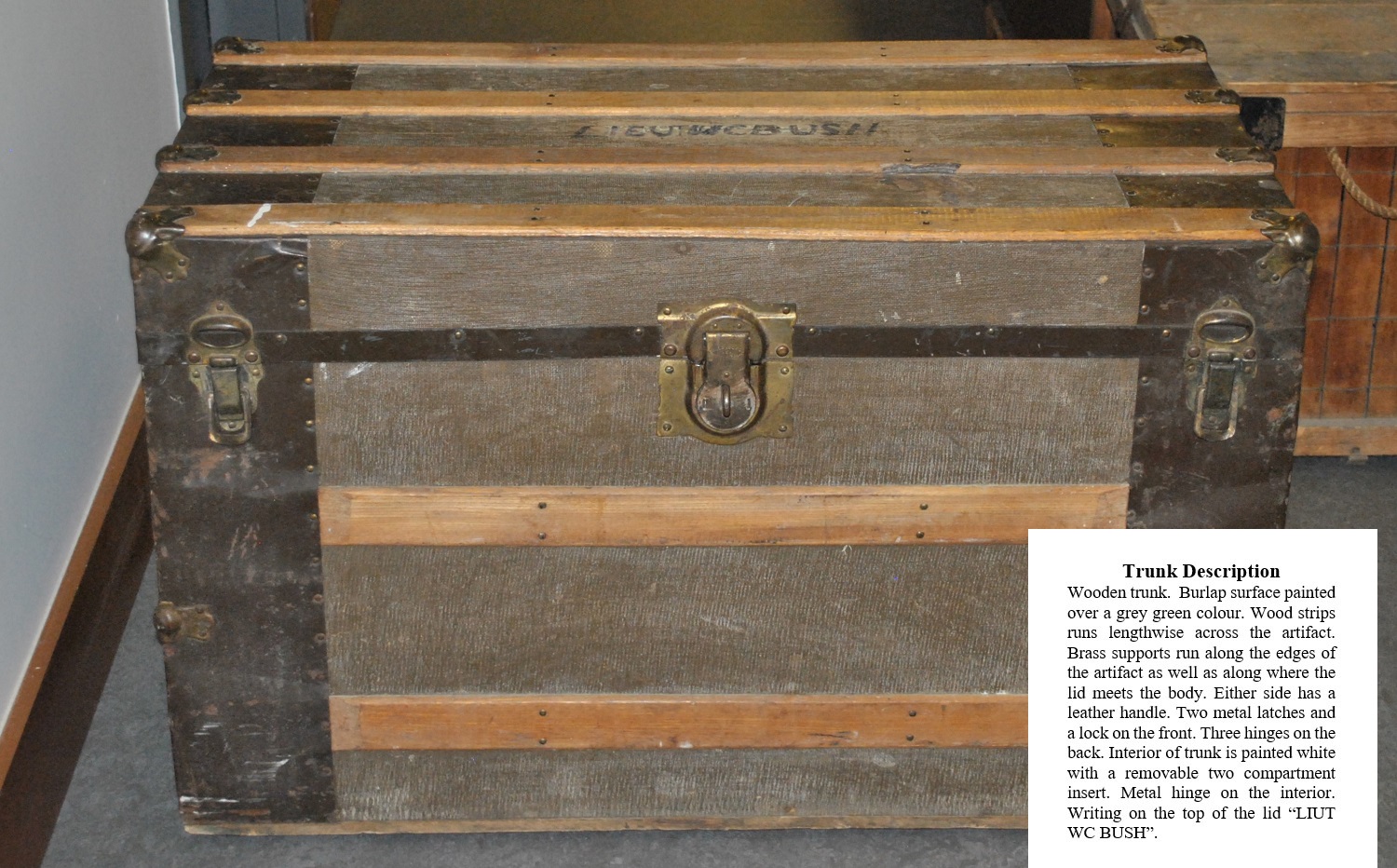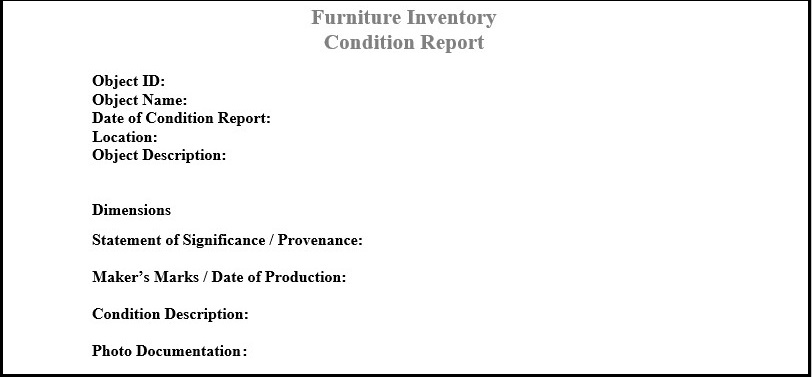
A Glimpse into an Artifact Inventory
It is baffling how much goes on behind the scenes in museums, so I thought I’d bring you along while I go through the steps of an inventory for a single artifact. This single artifact is part of the larger furniture inventory happening at the museum. First off, why would a museum be doing an inventory? This is one of those questions that has a million correct answers but more than anything else the answer is because it’s a good idea. By doing in-depth inventories we can make sure we know exactly where each artifact is, we can track potential damage, and we can make sure our database reflects up to date information about the artifact.
Let’s look at one of the trunks in the furniture collection. The first step for the artifact is to find the Object ID number. Museum artifacts have a unique number associated with them, these numbers are always very small and are located in a discreet location, making them quite tricky to find at times. Once I’ve identified the artifact, I measure the trunk and describe it in enough detail that it can be recognized. Next the location of the trunk is recorded so that the next person who is looking for it knows exactly where to find it.

Following this is I look over the artifact making notes on its condition. Are there dents? Scratches? Stains? A centimeter by centimeter inspection is completed of the artifact until every area of damage has been located, described, measured, and photographed. Artifacts have usually had a long life before coming to the museum and often have signs of wear and tear; we describe any damage present on the artifact so we can track its condition across time.

All the information and photographs of the artifact are put into one document called a Condition Report. This allows museum staff to look just at the one document and know exactly what artifact it is, its number, where to find it, and what condition it’s in. The final steps are to update our electronic database with anything new about the artifact, and add the artifacts story, gathered from the database, to the condition report.
This process will be repeated for much of the furniture in the museum’s collection, including every piece in the Gibbard Gallery, on display at the museum. This is definitely not a quick process but 55 artifacts in and I still think it’s incredible that I get to work closely with such a diverse collection.
